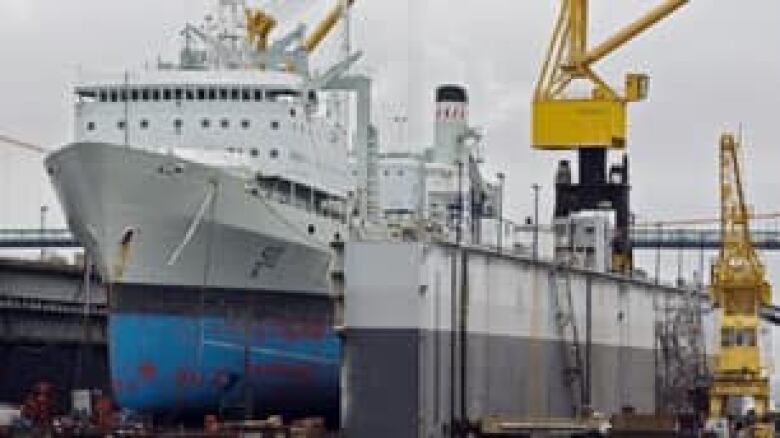MacKay lays out shipbuilding strategy
Defence Minister Peter MacKay on Thursday laid out Ottawa's$35-billion plan to reinvigorate Canada's moribund shipbuilding industry.

MacKay said the government will establish a long-term relationship with two Canadian shipyards for the procurement of the large ships one to build combat vessels, the other to build non-combat vessels.
"The plan is to select two Canadian shipyards in a fair and transparent process,"he said at the CANSEC arms show in Ottawa. "We expect to have these contracts signed withintwo years."
It is unclear how much of the $35-billion price tag is new money as the Canada First Defence strategy (first outlined by the Harper government in May 2008) called for spending $20 billion to replace destroyers and frigates and othervehicles in the Canadian Forces fleetbetween now and 2028.
It also called for $15 billion in previously announced purchases ofvehicles, including offshorepatrol ships.
'We need to cut steel on new ships.' Gen. Walter Natynczyk
The plan revealed Thursday will result in the creation of two "national" shipyards one for combat ships and one for non-combat ships.
Since 2006, Ottawa has had plans to build28 new large ships over the next several decades, at a cost ofmore than$33 billion, and more than 100 smaller ships on top of that.
Thefederal government has also been trying for the better part of a year to iron out a national policy that would get major shipbuilding companies to work together and become more efficient.
"This national shipbuilding procurement strategywill bring predictability and eliminate the cycles of boom and bust," saidPublic Works Minister Rona Ambrose, also on hand at the event. "It is about using Canadian sources to fill Canadian needs."
The construction of smaller ships will be set aside for competitive procurement among other Canadian shipyards, not the two large shipyards which have yet to be determined.
Ambrose said the investment will result in thousands of new jobs, and a total of some 75 million man-hours of work over the 30-year lifespan of the plan.
But that figure is not just in shipyards themselves it includessome maintenance, and construction work will be subcontracted to the broader marine industry and its suppliers, Ambrose said.
Upgrades needed
Critics have long complained about Canada's disjointed naval policy. The country's top military commander told the defence industry on Wednesday that new ships for the navy was his No. 1 procurement need, and noted it has been 14 years since the last major warship was launched in Canada.
Canada is the only NATO country without a national ship procurement strategy, Ambrose noted.
Gen. Walter Natynczyk, chief of defence staff, noted the38-year-old, 5,100-tonne command-and-control destroyer HMCS Iroquois will soon be the oldest frontline warship in the western world.
"We need to cut steel on new ships," Natynczyk said Wednesday.
With files from The Canadian Press












_(720p).jpg)


 OFFICIAL HD MUSIC VIDEO.jpg)
.jpg)



























































































